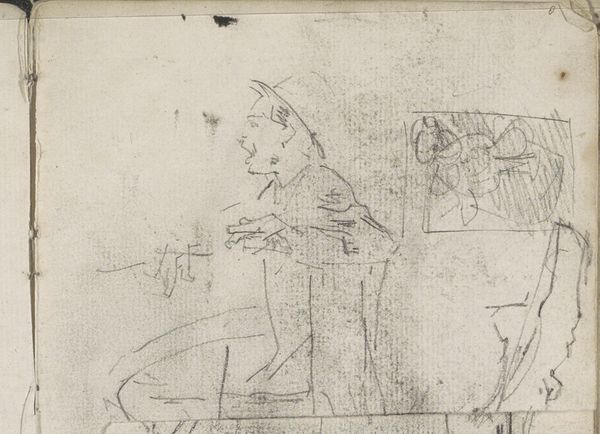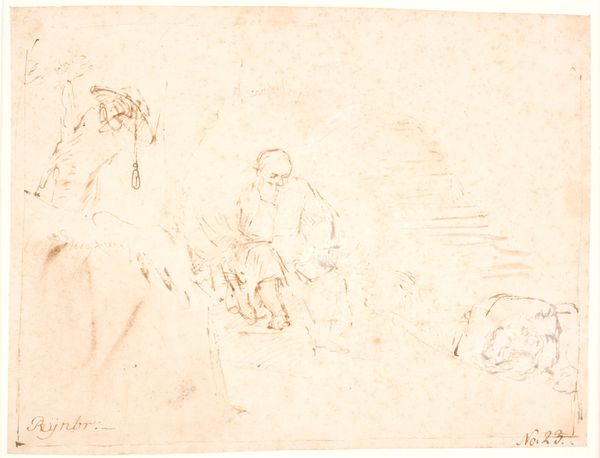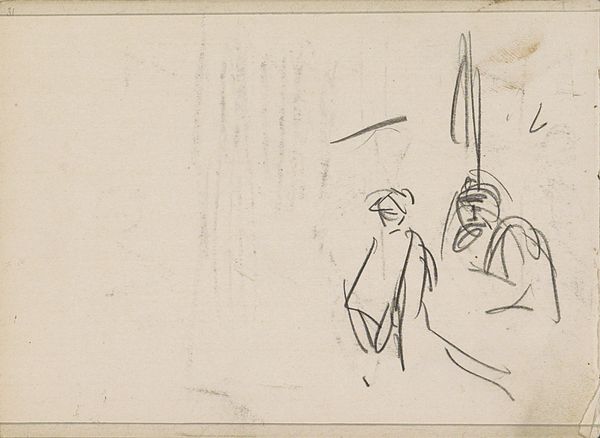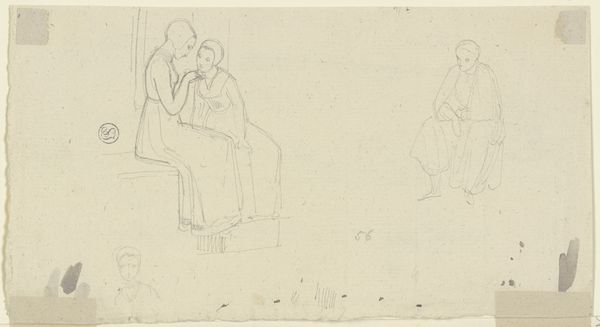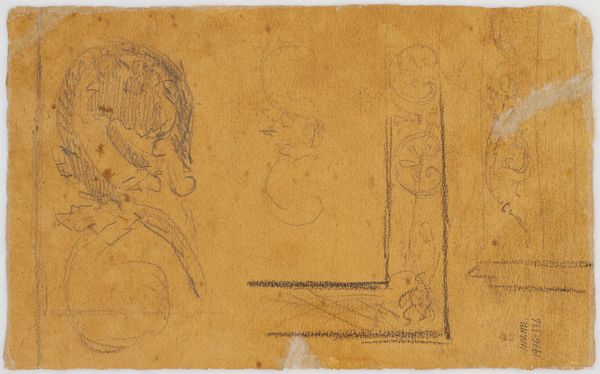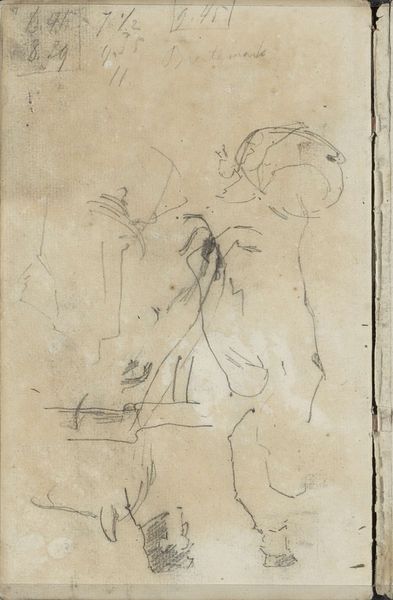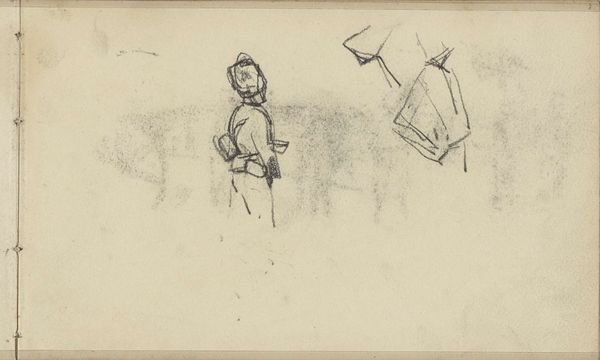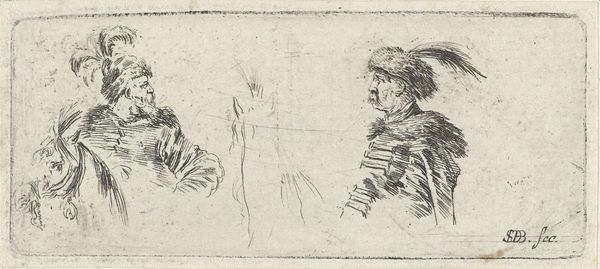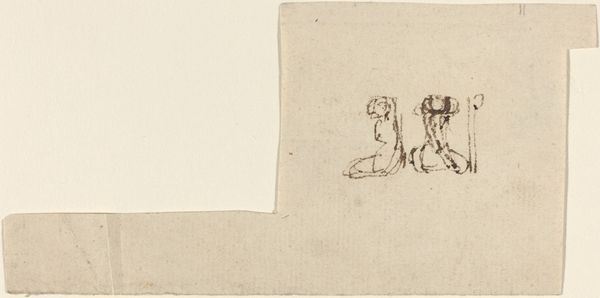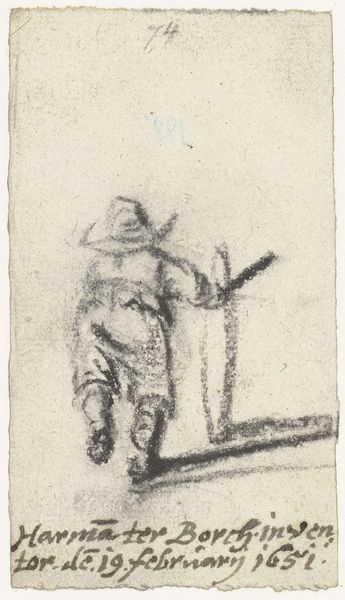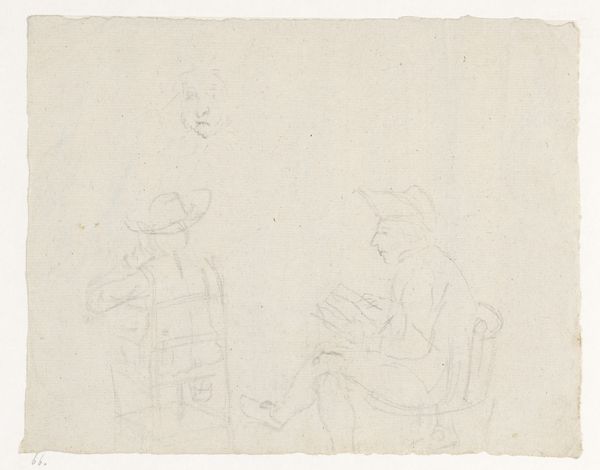
drawing, pen
#
portrait
#
drawing
#
toned paper
#
light pencil work
#
quirky sketch
#
baroque
#
dutch-golden-age
#
pencil sketch
#
incomplete sketchy
#
figuration
#
personal sketchbook
#
ink drawing experimentation
#
pen-ink sketch
#
line
#
sketchbook drawing
#
pen
#
genre-painting
#
sketchbook art
Dimensions: height 45 mm, width 74 mm
Copyright: Rijks Museum: Open Domain
Editor: So, this is "Sheet of Slight Studies, One of Two Peasants," a pen and ink drawing by Rembrandt van Rijn, circa 1651, currently residing in the Rijksmuseum. It looks like a quick, almost fleeting study of people. What do you see in this piece? Curator: Well, immediately I’m struck by the use of line. It's not just descriptive; it’s evocative. Look how Rembrandt uses a minimal number of strokes to suggest weight, texture, even personality. Notice the hat of the peasant on the right, it echoes symbols of status, of belonging to a social structure, a familiar element for the period. Editor: The figures seem very grounded and realistic. Curator: Indeed, Rembrandt excelled at humanising biblical, mythological, and historical scenes. How much do you think these depictions subvert expectations? What kind of collective memory did these portrayals leave behind? How do such unassuming images solidify their place in the history of art? Editor: It makes you wonder what stories Rembrandt intended to tell, or maybe even if he just was using them as figure studies for larger pieces? I can almost picture the types he was studying. Curator: Precisely. His images helped forge a connection with everyday life. These seemingly off-the-cuff sketches gave form to a whole section of society who would otherwise be overlooked. These drawings became a silent language. One that continues to shape how we understand the 17th-century Dutch Republic and its citizens. What about the lines that divide the page? Do you see it as separation, a way of showing the scene as multifaceted, or is it simply a consequence of the paper’s structure? Editor: I think I see the division in a new way; it really adds an insight into the artist’s working process. The studies aren't totally linked. Curator: Agreed. There is continuity as well as independence. Editor: Definitely seeing Rembrandt and his world a bit clearer.
Comments
rijksmuseum about 2 years ago
⋮
The bottom prints are among Rembrandt’s very first attempts at etching. They are not particularly skilfully etched, and their printing leaves much to be desired. They were not pulled in large numbers. In fact, both are extremely rare, making the fact that they survived for centuries all the more noteworthy. They bear unmistakable witness to Rembrandt’s early fascination with street people.
Join the conversation
Join millions of artists and users on Artera today and experience the ultimate creative platform.
